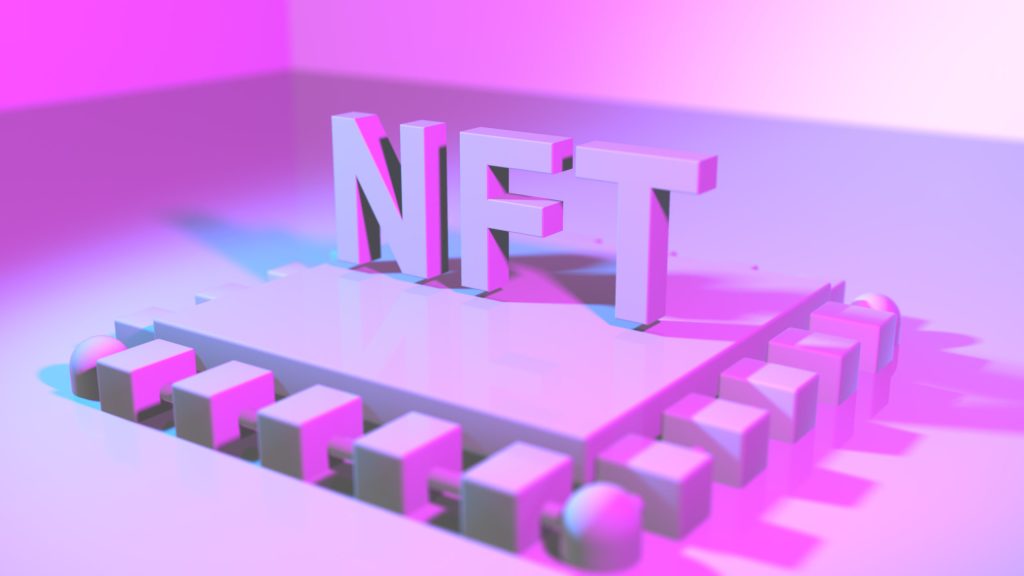Introduction
The Non-Fungible Token (NFT) market has experienced a meteoric rise in recent years, evolving from a niche concept confined to digital art enthusiasts to a global mainstream phenomenon. What was once perceived as a speculative trend or a hobby for collectors has now become an integral part of the digital economy, attracting everyone from established artists to tech giants, investors, and even governments. The rapid adoption of NFTs has brought both excitement and skepticism, highlighting their potential to revolutionize industries ranging from art and gaming to finance and entertainment.
This article will explore the journey of NFTs from their humble beginnings to their current status as a global mainstream market. We will discuss the underlying technologies, early adoption, pivotal events that sparked mass interest, and the cultural, economic, and regulatory implications of NFTs in the modern world. By examining the forces driving the growth of the NFT market and the evolving perspectives of stakeholders, we aim to provide a comprehensive overview of how NFTs have transitioned from being a niche digital art curiosity to an unstoppable global trend.
1. The Birth of NFTs: Niche Beginnings in Digital Art
1.1 What Are NFTs?
Before diving into the expansion of NFTs, it’s essential to understand their definition and key characteristics. Non-Fungible Tokens (NFTs) are unique digital assets that exist on a blockchain, representing ownership or proof of authenticity of a specific item. Unlike traditional cryptocurrencies such as Bitcoin or Ethereum, NFTs are non-interchangeable and carry distinct values.
Each NFT is built on a blockchain platform, typically Ethereum, which provides the decentralized infrastructure for minting, buying, selling, and trading these tokens. These tokens can represent anything from digital artwork to music, in-game assets, collectibles, and even virtual real estate in digital worlds or the metaverse.
1.2 The Early Days: A Digital Art Revolution
NFTs first gained significant traction within the digital art community, where they offered a new way for artists to sell and monetize their works. In the traditional art world, artists often struggle to prove ownership and originality of digital works due to the ease of copying and reproducing digital files. NFTs provided a solution by tying the artwork to a unique token, recorded on a blockchain, that can never be replicated.
The first major NFT projects such as CryptoPunks (2017) and CryptoKitties (2017) brought the concept of NFTs to life. CryptoPunks, a series of 10,000 unique pixelated characters, were initially released as free-to-claim digital assets but have since become highly sought-after collectibles. Similarly, CryptoKitties allowed users to buy, sell, and breed virtual cats, each one represented by a unique NFT.
Though these early projects were niche in nature, they laid the foundation for what would become a global phenomenon. At this stage, the appeal was largely limited to digital art enthusiasts, blockchain technology advocates, and a small group of collectors.
2. The Turning Point: Mainstream Attention and Digital Collectibles
2.1 The Rise of Digital Collectibles
NFTs slowly began expanding beyond the digital art community into the broader realm of digital collectibles. This shift started to take place in 2020, with platforms like NBA Top Shot and Sorare gaining widespread attention. These platforms allowed sports fans to purchase, trade, and collect officially licensed digital collectibles in the form of NFTs.
NBA Top Shot, launched by Dapper Labs, allowed users to purchase and trade officially licensed NBA highlights, known as “moments,” which are tokenized as NFTs. The concept quickly gained traction, especially among sports enthusiasts, and within months, sales on the platform skyrocketed, with some NFTs selling for millions of dollars. Sorare, a fantasy soccer platform that uses NFTs to represent player cards, also saw an explosion of growth, attracting both collectors and sports fans alike.
These platforms demonstrated the immense potential for NFTs to tap into mainstream fan culture, leveraging the scarcity and exclusivity of collectibles in the digital realm. Unlike traditional physical memorabilia, NFTs offer provable ownership, rarity, and authenticity through blockchain technology.
2.2 The Role of Celebrities and Artists
As NFTs continued to gain momentum, celebrities and well-known artists began entering the space, further driving its visibility. In early 2021, world-renowned digital artist Beeple made headlines when his artwork “Everydays: The First 5000 Days” sold for an astonishing $69 million at a Christie’s auction. This sale legitimized NFTs in the eyes of both traditional art collectors and the general public, showing that digital art could command significant value.
Other high-profile celebrities such as Snoop Dogg, Grimes, and Eminem followed suit, releasing their own NFT collections and further contributing to the market’s expansion. The involvement of these global figures introduced a new layer of excitement and credibility to NFTs, helping to bridge the gap between the niche digital art world and mainstream culture.
2.3 Integration with Virtual Worlds and Gaming
NFTs also began playing a significant role in the world of gaming and virtual reality, which are two areas that have long been associated with digital ownership and virtual assets. In 2021, the popularity of Play-to-Earn (P2E) games and the rise of metaverse platforms demonstrated the true potential of NFTs in a virtual economy.
Games like Axie Infinity allowed players to earn real-world value by collecting, breeding, and battling virtual creatures called Axies, all represented as NFTs. Players could also trade their Axies in secondary markets, often for substantial sums, creating a new form of digital asset ownership and income generation.
Simultaneously, virtual worlds like Decentraland and The Sandbox began selling virtual real estate as NFTs. Users could buy land, build on it, and even sell it to others, much like the real-world property market. These virtual worlds opened up new possibilities for creativity, investment, and social interaction in the digital realm.

3. The NFT Market: A Global Phenomenon
3.1 Growth in Market Value
By 2021, the NFT market had transitioned from a niche interest into a multibillion-dollar industry. NonFungible.com reported that the total sales volume of NFTs reached over $17 billion in 2021, up from just $82 million in 2020. This explosive growth was driven by several factors, including the growing interest in digital collectibles, the rise of decentralized finance (DeFi), the increasing number of celebrity and institutional endorsements, and the development of more accessible NFT platforms.
NFTs began to attract investors and buyers from all walks of life. While early adopters were primarily digital art enthusiasts and tech-savvy individuals, by 2021, the market was seeing participation from traditional collectors, investors, and even large institutions. Venture capitalists, hedge funds, and corporate giants began pouring money into NFT projects and platforms, betting on the long-term potential of the technology.
3.2 The NFT Marketplace Boom
One of the key drivers of NFT’s mainstream adoption has been the proliferation of NFT marketplaces. Platforms such as OpenSea, Rarible, SuperRare, and Foundation have made it easier for anyone to buy, sell, and trade NFTs. These marketplaces have become hubs for creators, collectors, and investors, providing them with a simple interface to interact with the NFT ecosystem.
In addition to these platforms, social media sites like Twitter and Instagram have become crucial venues for promoting and discussing NFTs. Influencers and creators use these platforms to showcase their work, build communities, and sell their NFTs to global audiences.
3.3 Integration with Traditional Industries
As NFTs began to move into the mainstream, traditional industries started to embrace the technology. Music, film, fashion, and sports have all been significantly impacted by the rise of NFTs. Musicians like Kings of Leon and Grimes have released albums and exclusive content as NFTs, while fashion brands such as Gucci, Dolce & Gabbana, and Nike have experimented with digital fashion collections and virtual merchandise.
Moreover, NFTs are now being used to represent a range of real-world assets, such as tickets to events, intellectual property rights, and even physical goods. The ability to tokenize ownership of real-world assets and link them to a digital NFT has the potential to reshape industries ranging from supply chain management to real estate and beyond.
4. Challenges and Considerations for NFTs
4.1 Environmental Concerns
One of the major criticisms of NFTs has been their environmental impact. The Ethereum blockchain, which hosts the majority of NFTs, operates on a Proof of Work (PoW) consensus mechanism, which requires significant computational power and energy consumption. This has raised concerns about the carbon footprint of the NFT market, especially as the market continues to grow.
However, Ethereum’s upcoming transition to Proof of Stake (PoS) with the Ethereum 2.0 upgrade aims to address these environmental concerns by drastically reducing energy consumption. Additionally, some NFT platforms are exploring more eco-friendly blockchains such as Tezos and Flow, which use more energy-efficient consensus mechanisms.
4.2 Market Volatility and Speculation
Like many emerging markets, the NFT space is also highly volatile. The prices of many NFTs can fluctuate wildly, and some NFTs that sold for millions of dollars at their peak have seen their value plummet. While NFTs offer substantial opportunities for creators and collectors, they also carry significant risks for investors and speculators.
4.3 Legal and Regulatory Challenges
The rapid growth of the NFT market has raised questions about intellectual property, ownership
rights, and the need for regulation. Since NFTs can represent anything from digital art to real-world assets, it’s important to establish clear legal frameworks that protect creators and consumers alike. Governments and regulators worldwide are currently evaluating how to approach NFTs from a legal and tax perspective.
5. The Future of NFTs: Towards a Global Digital Economy
The future of NFTs holds enormous potential. As the technology continues to mature and more industries adopt it, NFTs could play a pivotal role in the metaverse, decentralized finance (DeFi), and the overall digital economy.
5.1 Broader Adoption Across Industries
NFTs are likely to continue expanding beyond digital art and collectibles into new industries such as education, healthcare, and real estate. The ability to represent ownership, identity, and contracts through NFTs offers immense value in these sectors.
5.2 NFTs as a New Form of Social Identity
In the future, NFTs could become integral to how we express our social identity in digital spaces. Just as physical items like clothing and accessories are used to express status, NFTs could serve as a way for individuals to showcase their digital wealth, interests, and affiliations. Platforms like Twitter and Instagram are already seeing users display NFTs as profile pictures or badges of honor.
5.3 The Role of NFTs in the Metaverse
With the metaverse gaining momentum, NFTs will likely play a crucial role in the virtual economy, enabling users to buy, sell, and trade virtual assets in virtual worlds. This could involve everything from digital real estate to fashion, art, and collectibles, creating a fully integrated digital ecosystem.
Conclusion
NFTs have rapidly evolved from a niche concept into a global cultural and economic force, reshaping industries, revolutionizing ownership, and challenging traditional views on value and authenticity. As the market continues to expand, NFTs will become even more integral to the digital economy, driving the next phase of digital innovation. However, challenges related to environmental impact, market volatility, and regulatory clarity remain. Despite these hurdles, the future of NFTs looks promising, with the potential to redefine how we create, own, and interact with digital assets in an increasingly digital world.

















































